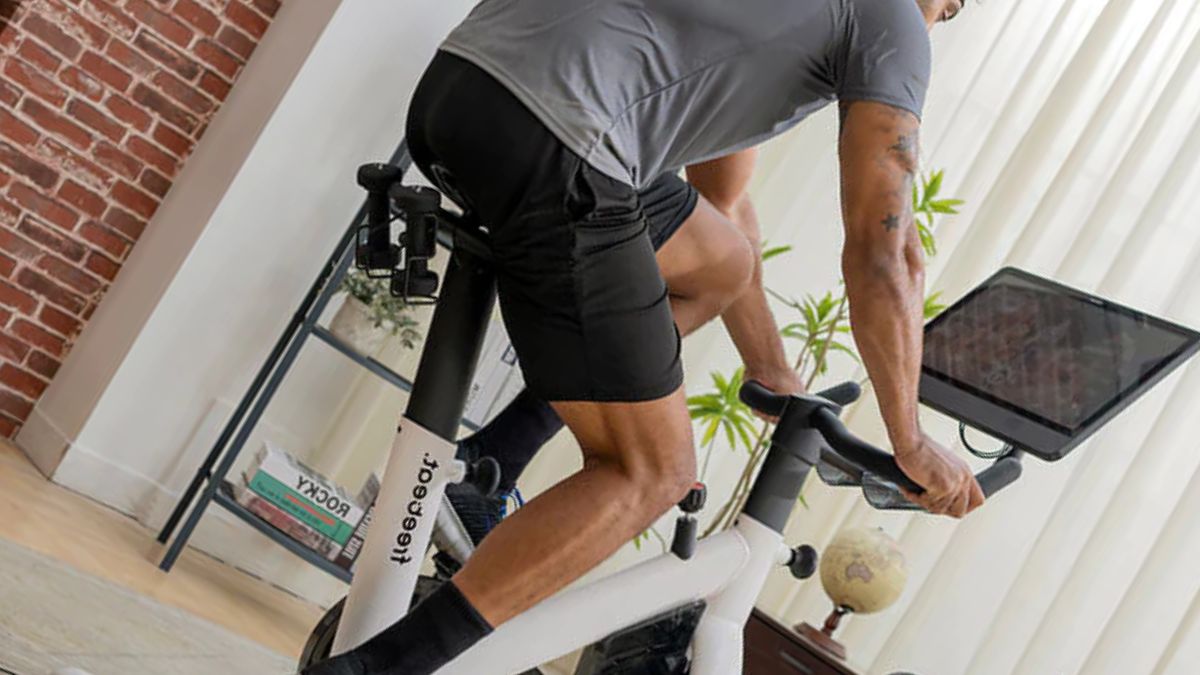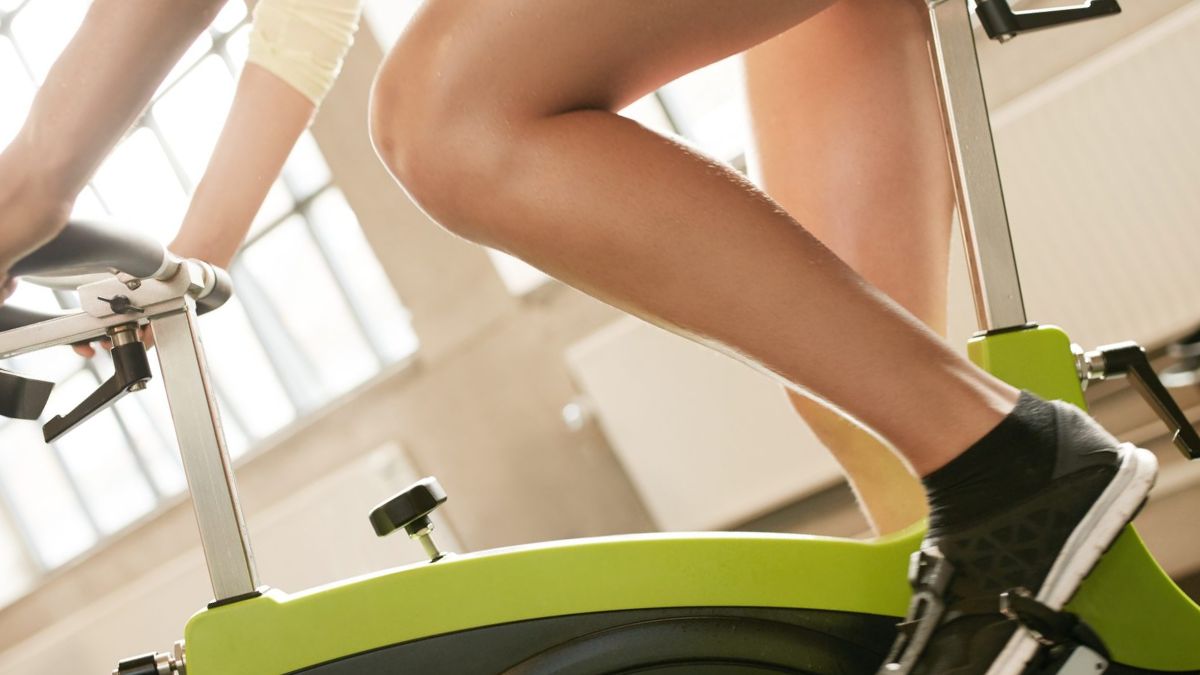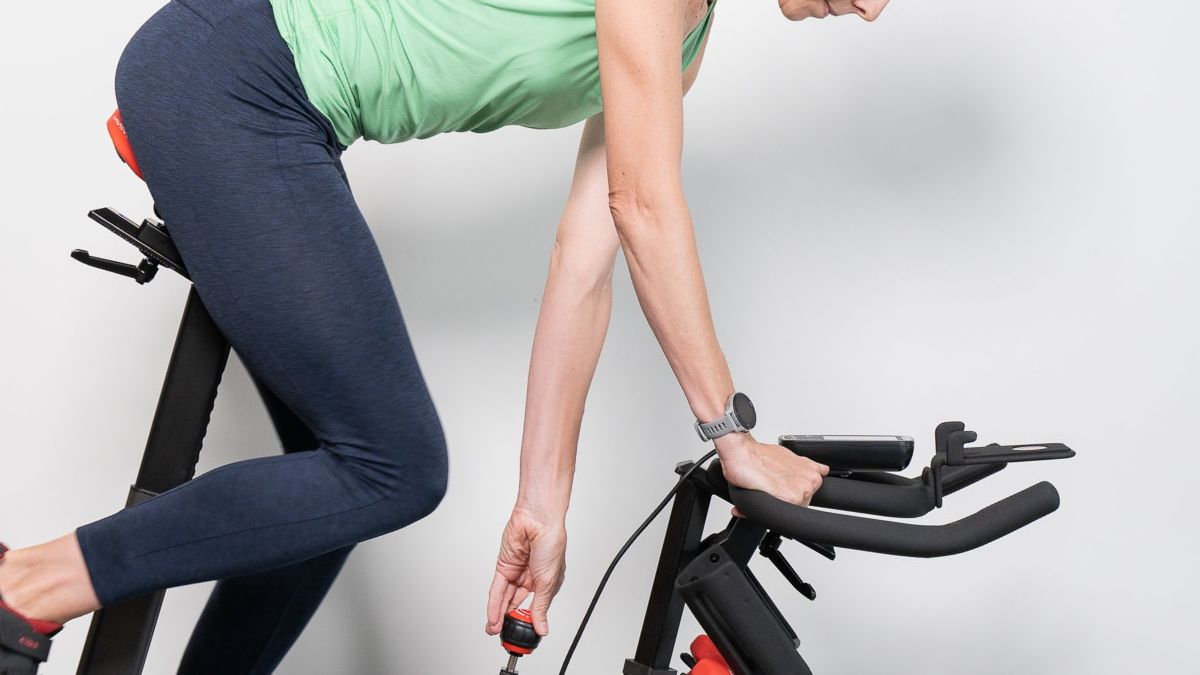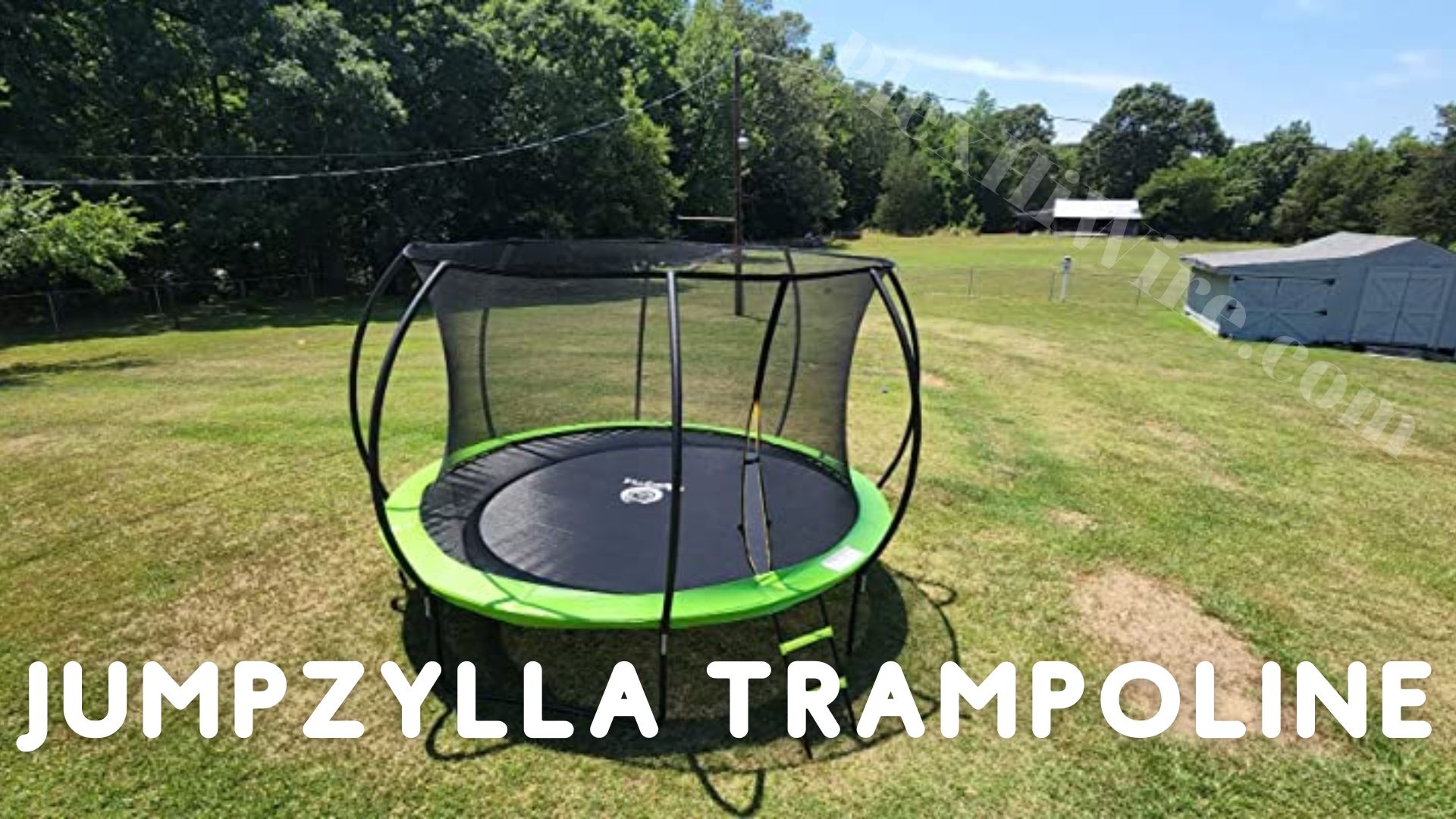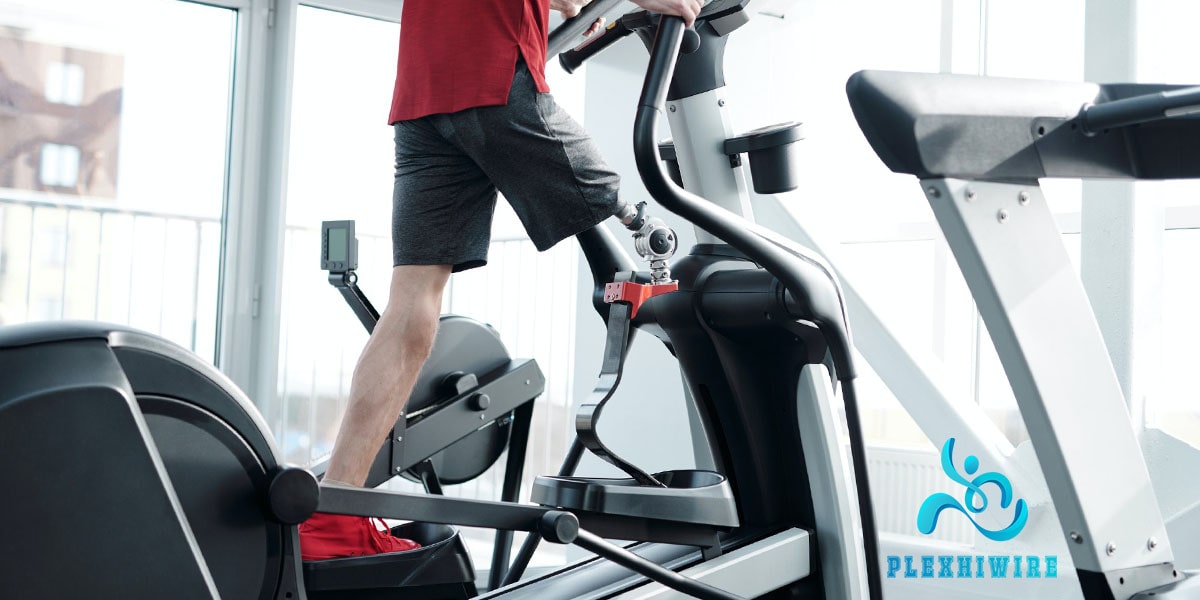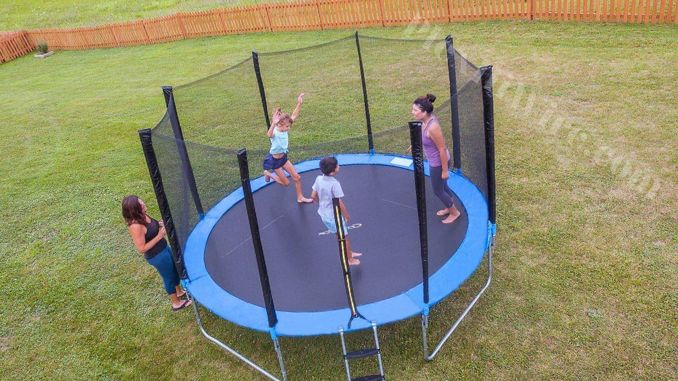How to Use Indoor Cycling for Knee Pain Relief
If you’re an avid cyclist looking for a safe way to continue your regular cycling activity while still being able to get some much-needed knee pain relief, then indoor cycling is the perfect solution. With low-impact exercises and low resistance, indoor cycling can provide a comfortable environment where riders can maintain their cardiovascular fitness and strength without worrying about pounding on the pavement or tiring muscles. Not only does this approach of combining cardio exercise with muscle strengthening offer amazing benefits such as relieving stress, and improving balance and posture, but it also provides extra protection for your knees – ultimately making it an ideal choice for anyone struggling with chronic knee pain. In the post “How to Use Indoor Cycling for Knee Pain Relief ” on this blog, we’ll discuss why indoor cycling is beneficial for people with minor knee pain, how it can be used as part of an overall rehabilitation program, and some tips for getting started.
Whether you’re a competitive cyclist looking to ease some of the aches and pains following hard training days or simply someone that wants to start enjoying their loved activity again – this post has something for everyone! So if joint discomfort has been holding you back from your fitness goals – it’s time to grab your spin shoes and have some fun on a stationary bike!
- How to Use Indoor Cycling for Knee Pain Relief
- What are the Benefits of Indoor Cycling For Knee Pain Relief?
- How to Use Indoor Cycling for Knee Pain Relief
- What Kinds of Exercises Should I Do on an Indoor Bike to Help With Knee Pain?
- How Can I Make My Indoor Cycling Session More Effective for Knee Pain Relief?
- What Safety Precautions Should I Take While Cycling Indoors?
- What Tips Can I Follow to Get the Most out of My Indoor Cycling Workouts?
- What Types of Results Can I Expect From Regular Indoor Cycling Sessions for Knee Pain Relief?
- Is Indoor Cycling Hard on Your Knees?
- Should You Use Resistance Settings When Riding an Indoor Cycle Trainer for Knee Pain Relief?
- Frequently Asked Questions
- Conclusion
What are the Benefits of Indoor Cycling For Knee Pain Relief?
Indoor cycling has been proven to be an effective form of exercise for people with knee pain. This low-impact, non-weight-bearing exercise allows individuals to get their heart rate up without putting unnecessary strain on their knees. Here are some more specific benefits of indoor cycling for knee pain relief:
Improved cardiovascular health: Cycling on an indoor bike is a great way to improve your cardiovascular health. It gets your heart rate up and strengthens your heart, lungs, and circulatory system. Improved cardiovascular health can also lead to decreased knee pain and inflammation.
Low-impact exercise: Unlike running or jumping, indoor cycling is a low-impact exercise that puts less stress on your knees and joints. This can help to reduce knee pain and inflammation, especially for those with arthritis or other knee conditions.
Increased flexibility and range of motion: Cycling on an indoor bike can help to increase flexibility and range of motion in the knees, which can help relieve knee pain and improve mobility. As you pedal, your knees move through a full range of motion, which can help to loosen up tight muscles and improve joint function.
Strengthened muscles: Cycling on an indoor bike can also help to strengthen the muscles surrounding the knees, which can help to relieve knee pain and prevent further injuries. Stronger muscles provide better support for the knee joint, which can help to reduce strain and alleviate pain.
Controlled environment: Cycling indoors provides a controlled environment where you can adjust the resistance and intensity of your workout to meet your individual needs. This allows you to exercise without exacerbating your knee pain or risking further injury.
In conclusion, indoor cycling is a safe and effective form of exercise for individuals with knee pain. It provides numerous benefits, including improved cardiovascular health, low-impact exercise, increased flexibility and range of motion, strengthened muscles, and a controlled environment for safe and effective workouts. So if you suffer from knee pain, hop on an indoor bike and start cycling your way to pain relief and improved overall health!
How to Use Indoor Cycling for Knee Pain Relief
If you suffer from knee pain, you may think that many exercise routines are simply not an option for you. However, indoor cycling is an excellent way to manage knee pain while still keeping active and enjoying a rigorous workout session. One of the ways to alleviate knee pain is through indoor cycling.
Firstly, it’s important to understand why indoor cycling is a great option for knee pain sufferers. Cycling is a low-impact exercise, which means that it puts minimal pressure on your joints. Unlike running or high-intensity aerobic exercises, indoor cycling is less likely to cause the kind of repetitive stress and strain that can worsen existing knee pain. Instead, cycling helps to engage and strengthen the muscles that support your knees, including the quadriceps, hamstrings, and calves.
Before starting any workout routine, it’s important to check with your healthcare provider to ensure that indoor cycling is safe for you and your specific condition. Once you get the green light, grab a good-quality stationary bike and set it up properly to avoid any potential injuries. Make sure the seat height is adjusted so that when you sit in the seat, your knees are bent at a 25-degree angle. Additionally, adjust the handlebars so that you can comfortably reach the grips without straining your shoulders or neck.
When you’re ready to start cycling, begin with a warm-up that gets your heart rate up and prepares your muscles for the workout ahead. Gentle pedaling at a low resistance for 5-10 minutes is a great way to start. As you begin to feel more comfortable, increase the resistance gradually to build strength in your leg muscles. Aim for a moderate-intensity workout, avoiding high resistance or fast pedaling as these can put undue pressure on your knees and cause pain.
One of the key benefits of indoor cycling for knee pain relief is that it is highly customizable, so it’s easy to adjust your workout to suit your needs. If you start to feel discomfort in your knees, try lowering the resistance and slowing down your pedaling. Alternatively, you can adjust your body position by moving forward or back or adjusting the height of the handlebars or seat. Remember to listen to your body and never push too hard if you experience any pain.
In conclusion, indoor cycling is an effective way to manage knee pain and still enjoy a challenging and satisfying workout. By engaging and strengthening the muscles that support your knees, you can improve your mobility and reduce pain over time. Before starting any new exercise routine, always check with your healthcare provider to ensure that it is safe for you and your specific condition. With the right bike setup and a moderate-intensity workout, indoor cycling is a great way to stay active and pain-free.
Know more: How to Calories Burned on a Stationary Bike
What Kinds of Exercises Should I Do on an Indoor Bike to Help With Knee Pain?
Knee pain is a common problem faced by cyclists, and it can be exacerbated by inadequate exercise routines. However, with the right kind of exercise, you can strengthen your knee muscles and alleviate the pain. An indoor bike is an excellent option for a low-impact exercise that works your quads, glutes, and hamstrings without putting undue stress on your joints. Here are some exercises you should consider to help alleviate knee pain:
Warm-up exercises: Before starting your bike workout, it is advisable to do some warm-up exercises. You can begin with some light cardio like brisk walking, jogging, or cycling on the stationary bike for five to ten minutes. This will help increase blood flow, which is essential for preventing knee injuries.
Pedal at a Moderate Intensity: Pedaling at moderate resistance (200-250 watts) is a great exercise and is suitable for people with knee pain that want to build endurance and strength. Be sure to maintain a steady pace and an ideal cadence of 80-100 revolutions per minute (RPM) to improve your cardiovascular system and get maximum benefits from your exercise.
Add Resistance: Resistance training is a great way to improve knee strength. To do this, you can gradually increase the resistance on your indoor bike while cycling at lower speeds. Add resistance and aim to push yourself for short bursts of 20 to 30 seconds and do three to four sets.
Single-Leg Pedaling: Single-leg pedaling is an exercise for strengthening the quadriceps and improving balance. All you need to do is pedal with one leg while keeping the other leg off the pedal. This process can help you isolate the knee, improve your balance, and reduce uneven pressure distribution.
Stretching and Cool-down exercises: After completing your workout, you must stretch to loosen your muscles and cool down. You can stretch your hamstrings, quadriceps, glutes, and lower back to prevent stiffness and reduce the risk of injury.
In conclusion, indoor cycling can be a beneficial exercise for people with knee pain, provided the right exercise routines are followed. Be sure to warm up, pedal at moderate intensity, add resistance, incorporate single-leg pedaling, stretch, and cool down. These exercises can help improve your knee muscles’ strength and reduce pain and discomfort.
How Can I Make My Indoor Cycling Session More Effective for Knee Pain Relief?
If you suffer from knee pain, you’re not alone. Knee pain is a common issue experienced by many, especially in the world of sports and exercise. One way to alleviate the pain, improve mobility and strengthen your leg muscles is by incorporating indoor cycling sessions into your fitness routine.
Here are some tips on how to make your indoor cycling session more effective for knee pain relief:
Adjust your seat and handlebars
To prevent knee pain when cycling, your seat, and handlebars should be properly adjusted. Make sure your seat is at the correct height so that your knee is slightly bent at the bottom of the pedal stroke. Your handlebars should also be at a comfortable distance to support good posture and prevent back strain.
Use proper cycling shoes
Cycling shoes are designed to provide support and stability, which can help reduce knee pain. They also allow for better transfer of power from your leg muscles to the pedals, leading to a more efficient cycling motion.
Warm up and cool down
A proper warm-up and cool-down routine can help reduce the risk of knee pain during and after your cycling session. Spend at least 5-10 minutes warming up before you start the workout and cool down for a few minutes after the session to prevent muscle soreness.
Adjust resistance levels
When cycling, avoid going too hard too fast as this can put unnecessary pressure on your knees. Gradually increase the resistance level to avoid sudden strain on your ligaments and muscles.
Stretch your legs
After your indoor cycling session, take a few minutes to stretch your legs to reduce muscle soreness and lessen the chance of injury. Focus on stretching your calves, hamstrings, and quads to keep them flexible and strong.
In conclusion, indoor cycling is an effective way to alleviate knee pain and build leg strength. By making adjustments to your bike, shoes, and resistance levels, as well as incorporating proper warm-up and cool-down routines and post-workout stretching, you can optimize your indoor cycling session for knee pain relief. As with any exercise, be sure to consult with your doctor or physical therapist to ensure that it is suitable for your condition.
What Safety Precautions Should I Take While Cycling Indoors?
Cycling indoors is becoming an increasingly popular way to stay fit and healthy. Whether you cycle at home on a stationary bike or at a gym, it is important to ensure your safety while cycling. While cycling indoors may seem less risky than cycling on busy roads, there are still some safety precautions that you should take.
Firstly, make sure you wear appropriate clothing and gear. Cycling shoes or trainers with a solid, non-slip sole can help prevent you from slipping off the pedals. Additionally, padded cycling shorts can provide more comfort during longer rides. Proper clothing can help prevent injuries that might prevent you from cycling in the future.
Secondly, ensure proper posture and form by adjusting your seat. A proper seat height is key to avoiding any abnormal pain or injury from cycling. Sit with your back straight and head up. Keep your elbows relaxed and your shoulders down to avoid tension.
Thirdly, maintain correct resistance by adjusting the intensity of your workout. Failure to do so may place excessive or inappropriate strain on your joints. A gradual increase of resistance over weeks and months will help you avoid discomfort, overuse injuries, and other complications.
In addition, ensure that your equipment is in good working order and is correctly adjusted. Before you start cycling, check your bike for any damage or lose parts that might fail during your ride. Properly maintained equipment not only works better but could also prevent any mechanical accidents or mistakes that could lead to injury.
Moreover, stay hydrated at all times. Cycling makes you sweat, so make sure you drink plenty of water before, during, and after your cycling session. Not getting enough fluids may lead to dehydration and negatively affect your workout performance and recovery.
Finally, be aware of your surroundings and any other cyclists around you. Always follow the rules of the facility or gym where you’re cycling, be considerate of others around you, and avoid passing other cyclists too closely.
By taking these safety precautions while cycling indoors, you can make the most of your indoor cycling experience and reduce your risk of injury. Remember, staying safe is key to enjoying all of the benefits of cycling.
What Tips Can I Follow to Get the Most out of My Indoor Cycling Workouts?
Indoor cycling is a popular form of exercise that helps you burn calories and improve your cardiovascular health. Whether you are a beginner or an experienced cyclist, there are a few tips you can follow to get the most out of your indoor cycling workouts.
Proper bike fit is crucial to ensure that you can ride comfortably and avoid injuries. Make sure that your saddle height, handlebar height, and fore/aft positions are adjusted to match your body size and shape.
Make sure you wear comfortable, breathable clothing that doesn’t cause chafing or restrict movement. Invest in a good pair of cycling shoes with clips to help transfer power and reduce fatigue.
Monitoring your heart rate is a great way to track your progress and ensure that you are working out at the right intensity. Use a heart rate monitor or the built-in monitor on your bike to track your heart rate during your workout.
Indoor cycling workouts can get boring if you just ride aimlessly. Following a structured plan can help you stay engaged and challenge you to push yourself harder. There are many structured plans available online or through cycling apps that cater to different fitness levels and goals.
To keep things interesting and prevent boredom, vary your workouts by incorporating intervals, hills, and sprints. You can also try different types of indoor cycling classes such as virtual reality rides or music-themed rides.
Indoor cycling can be a sweaty, intense workout, so make sure you drink plenty of water before, during, and after your ride to stay hydrated.
In summary, by adjusting your bike properly, wearing comfortable clothing, monitoring your heart rate, following a structured workout plan, varying your workouts, and staying hydrated, you can get the most out of your indoor cycling workouts and achieve your fitness goals.
Read more: Get Fit Quickly with the Slim Cycle Exercise Bike
What Types of Results Can I Expect From Regular Indoor Cycling Sessions for Knee Pain Relief?
Indoor cycling is a low-impact exercise that involves riding a stationary bike. It is a great way to get your heart pumping and improve your overall health. Additionally, indoor cycling has been found to be effective in relieving knee pain symptoms in those with knee issues.
Regular indoor cycling sessions can help to alleviate knee pain by strengthening the muscles surrounding the knee joint. This added strength helps to stabilize the knee, reducing joint pain and stiffness. Indoor cycling also helps to reduce the impact on the joints during exercise, making it a safe exercise option for those with knee pain.
Moreover, indoor cycling has been found to be an effective way of managing weight. Weight management is crucial for reducing the pressure on your knee joints, which often worsens knee pain. Losing even a small amount of weight can significantly reduce knee pain symptoms.
Regular indoor cycling sessions have also been associated with decreased levels of inflammation and stress in the body. This reduction in inflammation can help alleviate knee pain symptoms for those with knee issues.
It is essential to start indoor cycling gently and gradually increase the intensity. It is recommended that you start indoor cycling sessions under the guidance of a professional trainer, especially if you have a pre-existing condition.
In conclusion, regular indoor cycling sessions can be an effective way to alleviate knee pain. This low-impact exercise helps to strengthen the muscles around the knee joint, reduce joint pain and stiffness, manage weight, and decrease inflammation levels. However, it is best to seek advice from a professional trainer, especially if you have a pre-existing condition, before embarking on indoor cycling sessions.
Is Indoor Cycling Hard on Your Knees?
Indoor cycling is a form of exercise that has gained immense popularity over the last few decades, owing to its numerous physical and mental health benefits. However, one of the most common concerns among individuals interested in this activity is whether or not indoor cycling is hard on the knees.
The truth is that indoor cycling can be hard on the knees, but only if done incorrectly or excessively. This is because cycling involves continuous repetitive motion, which can put a strain on the knee joint if the right form and technique are not followed.
However, when done correctly and in moderation, indoor cycling can actually help strengthen the muscles around the knees and improve joint mobility. In fact, cycling is often recommended as a low-impact exercise for individuals with knee injuries or chronic knee pain.
To ensure that indoor cycling does not cause harm to the knees, it is important to adjust the bike to fit your body properly, maintain proper form and alignment during the cycling session, and listen to your body’s cues. It is also recommended to start slow and gradually build up intensity over time.
Moreover, incorporating strength-training exercises that target the quadriceps, hamstrings, and glutes can also help support the knees and prevent injury.
Should You Use Resistance Settings When Riding an Indoor Cycle Trainer for Knee Pain Relief?
The answer to this question depends on the cause of your knee pain. In some cases, resistance settings may help reduce discomfort in the knees, while for other causes they may be ineffective or even exacerbate existing pain. If you have chronic knee pain and are considering using an indoor cycle trainer to relieve symptoms, it is recommended that you consult with a medical professional first. They can provide a more comprehensive assessment and recommend any necessary modifications or adjustments based on your individual condition. Additionally, if you do decide to use resistance settings while riding an indoor cycle trainer, make sure that you adjust them as needed so that your leg muscles and joints remain comfortable throughout the workout. This will help ensure that you don’t exacerbate any underlying knee issues while still getting a good workout.
Once you have consulted with your doctor and are given the go-ahead to use resistance settings as part of your workout routine, it is important to start small and increase gradually. This will allow your body time to adjust and adapt to the increased intensity without straining or stressing any existing problems. Additionally, be sure to take regular breaks throughout your workout session by eliminating or lowering the resistance when needed. Doing so can help reduce strain on your knees and other joints while still providing a beneficial cycling experience overall.
In conclusion, resistance settings on an indoor cycle trainer can be used to provide relief from knee pain when done properly and under the guidance of a medical professional. Always start with low-intensity levels and increase gradually, take regular breaks throughout your workout session, and pay attention to any changes in symptom severity after each use. Doing so will help ensure that you are able to get a good workout without putting further strain on your knees and other joints.
Frequently Asked Questions
How Often Should I Use Indoor Cycling As a Form of Therapy for My Chronic Knee Pain?
For those suffering from chronic knee pain, finding a form of therapy that not only improves mobility but also provides a low-impact workout can be a challenge. Indoor cycling has become a popular option for individuals seeking both of these benefits. However, the frequency at which one should use indoor cycling as a form of therapy for chronic knee pain may vary depending on the individual’s level of pain and ability to recover from the workout. It’s important to work with a medical professional to develop a personalized plan that takes into account the severity of your knee pain and allows for proper rest and recovery. With proper planning and guidance, indoor cycling can be an effective and enjoyable way to manage chronic knee pain.
How Can I Track My Progress by Using Indoor Cycling for Knee Pain Relief?
Indoor cycling can be a fantastic way to relieve knee pain, especially when done consistently and with proper form. One of the most crucial aspects of making progress with this type of exercise is to track your progress along the way. By doing so, you can better understand what is working for you and what may need adjustment. One way to track your progress with indoor cycling is to use a fitness tracker or app that logs your rides, including your heart rate, duration, and distance. Another way is to simply keep a journal of how you feel before and after each cycling session, noting any improvements or setbacks. No matter how you choose to track your progress, remember to celebrate the small wins along the way and keep pushing yourself toward your goal of pain-free knees.
How Much Time Should I Spend on the Bike Each Day for Maximum Knee Pain Relief Benefits?
If you’re someone who experiences knee pain, you know it can be debilitating. The good news is that one way to potentially relieve that pain is by riding your bike. However, just how much time should you spend on the bike each day to maximize those benefits? The answer isn’t a straightforward one – it really depends on the severity of your pain and your overall fitness level. Generally speaking, starting with shorter rides of 15-30 minutes and gradually building up as your tolerance increases is a good place to start. It’s important to listen to your body and not push yourself too hard, as this could exacerbate your pain. Remember, consistency is key, so be sure to make biking a regular part of your routine for the best results.
Conclusion
Finally, indoor cycling is a great way to get relief from knee pain. Cycling strengthens the muscles around your knees, tightens joint flexibility, and moves fluid out of the area to reduce inflammation. The combination of these benefits can help alleviate knee pain over time. Additionally, because you are cycling in a stationary position, you avoid some of the dangers associated with outdoor biking like poor road conditions or traffic.
Overall, if you are looking for a low-impact way to relieve your knee pain without sacrificing an effective workout, indoor cycling is an excellent option that not only relieves knee pain but also aids in weight loss, improved cardiovascular health, building muscle, and burning calories. Whether you’re cycling at home or at a gym, it is important to always take it easy at first and gradually increase intensity as your body adjusts and becomes used to this new activity. As with any exercise routine, it’s best to consult a healthcare professional before beginning any kind of exercise. If done smartly and safely indoor cycling can be truly beneficial for those seeking relief from knee pain.
I hope this “How to Use Indoor Cycling for Knee Pain Relief” article will be of some help to you about your knee and don’t forget to share it with those who need it.
